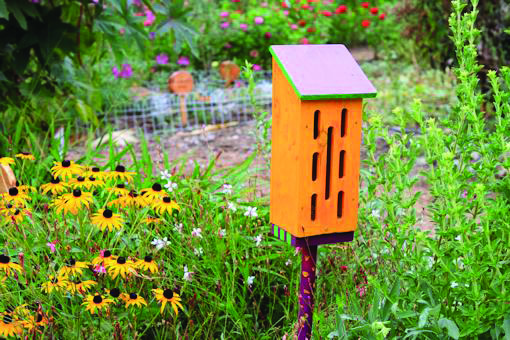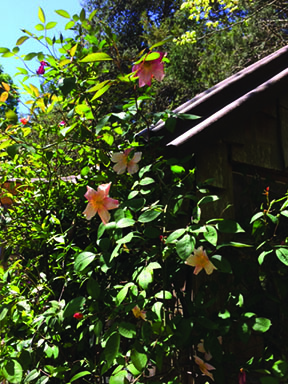They say when a butterfly crosses your path, it means that you should embrace all changes that are about to come into your life. With our early spring I´m not sure what came first this year, butterflies or the coronavirus but the one thing I do know is life has changed. But crisis moments also present opportunities like a revived appreciation for the outdoors and life´s simple pleasures. Butterflies are one of those simple pleasures in my wildlife habitat garden known as WillowDale. Cloudless sulphurs, tiger swallowtails, giant swallowtails, buckeyes, and pipevine swallowtails (already laying eggs on the fresh leaves of my Dutchman´s pipevine plant…Aristolochia macrophylla) are fluttering about enjoying spring flowers. I have even seen a few butterflies on this antique rose called Butterfly Rose (Mutabilis) with yellow, pink, and peach single blossoms growing on the side of my potting shed, but I digress.
With this early arrival of all these butterflies, it makes me want to rush out and buy a new butterfly house. And why not, they have become familiar garden accessories that are pretty in the garden. They say the butterfly house is designed to provide shelter for hibernating adult butterflies from inclement weather or cold temperatures. They resemble birdhouses, but have elongated slits instead of round holes for entry. Most have a hinged door or removable lid with instructions telling us to add bits of branches or twigs for butterflies to wedge between or grab hold of. Once stocked, butterfly houses are hung or mounted on a pole in the garden with hopes that butterflies will make their way inside.
While it sounds believable, butterfly houses don´t work and are not effective at attracting butterflies to our gardens! A few years ago, the North American Butterfly Association asked its members if they had found butterflies actually using the houses. Not one member said they had. And the Entomology Dept. at Penn State conducted a study to determine butterfly use of houses from 1995-97. They monitored 40 houses built by an Eagle Scout. The houses were erected along a woodland trail known to be used by wintering butterflies. When the butterfly houses were checked after they had been in place for two years the biologist found some of the houses had an assortment of other critters such as ants, stink bugs, wasps, flies, even nests of mice. None of the houses had been used by a single butterfly.
In our area we have several butterfly species, like the mourning cloak (Nymphalis antiopa) and gulf fritillary (Agraulis vanillae) that survive the winter months as adults but they prefer to hibernate under bark, in vegetation, or in a brush pile. To a butterfly, these natural areas are more inviting and protective than an artificial structure placed out in the open.
That is not to say that we can’t help butterflies or other wildlife. Butterfly houses provide great hiding places and nest locations for spiders and wasps, two very beneficial garden critters. Planting a diversity of colorful native flowers, annuals and larval host plants, as well as leaving shrubby areas or brush piles will bring many butterflies to your garden. By doing so, our garden can provide food and shelter for birds, butterflies, and other desirable wild creatures as an attractive destination year round. In the meantime, take this time of change to enjoy nature and all those beautiful butterflies. And just consider the butterfly house a very pretty garden ornament!■




